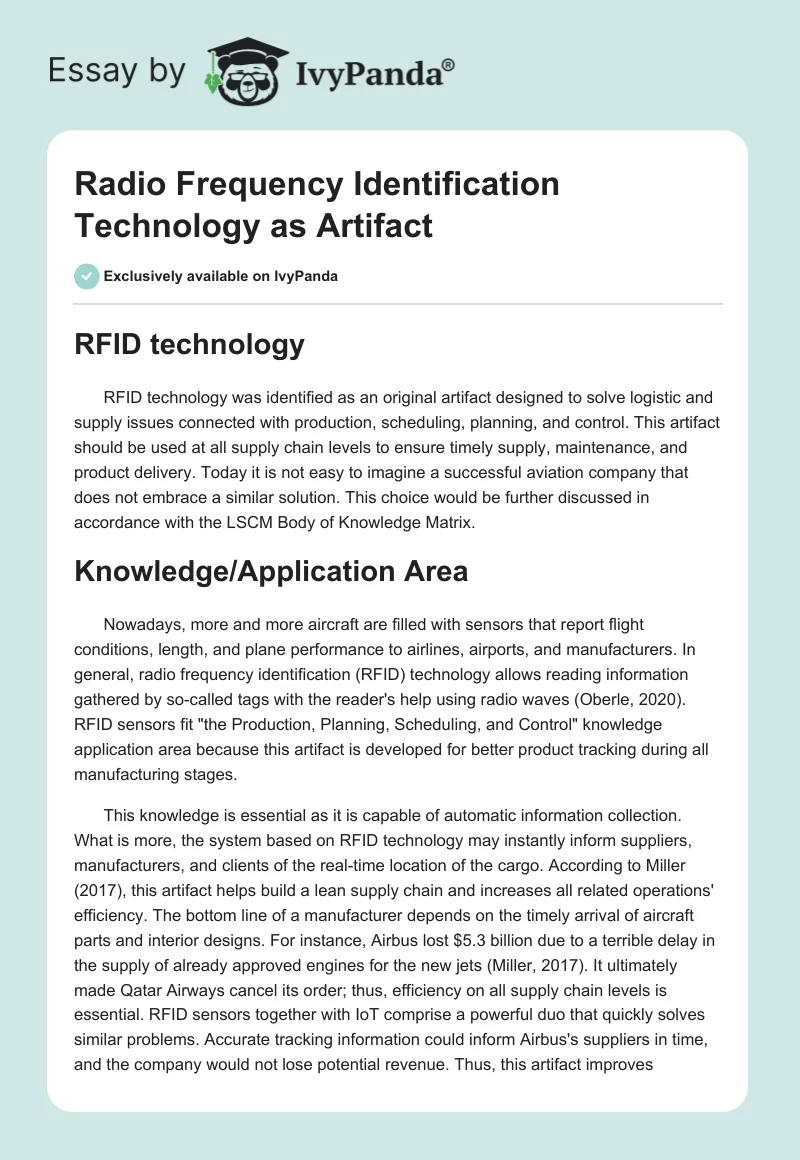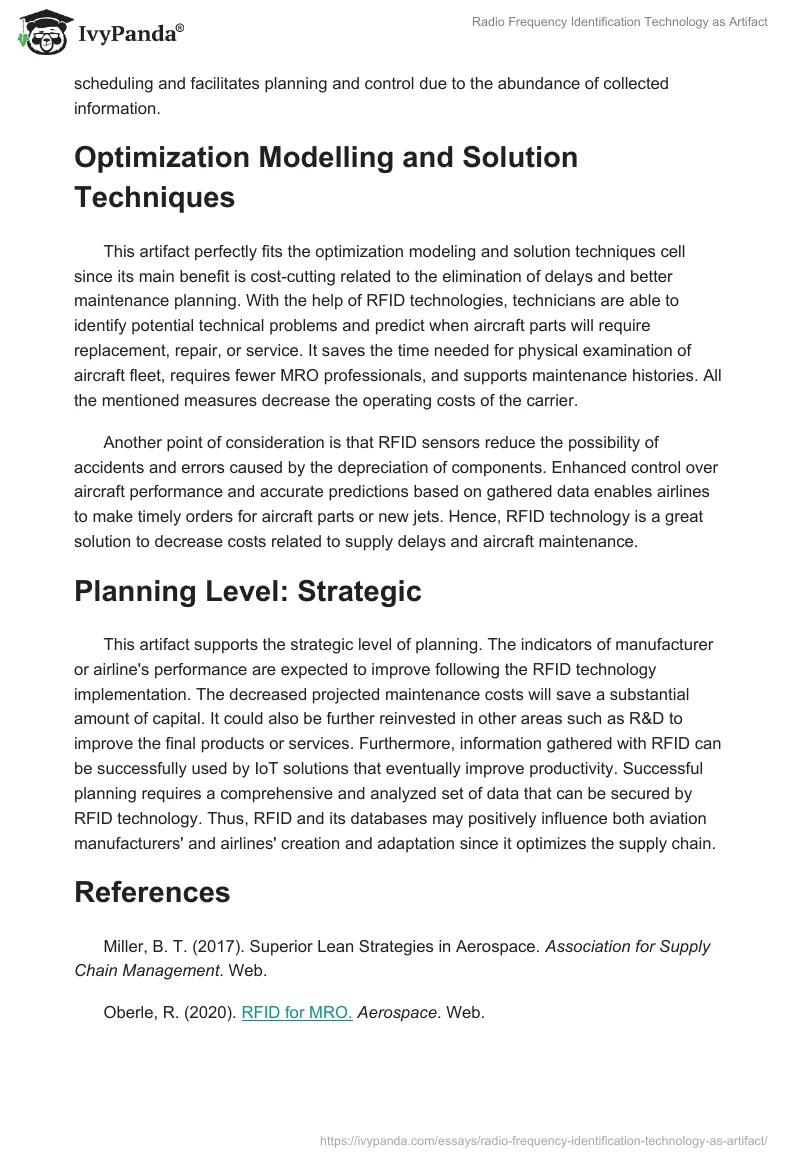RFID technology
RFID technology was identified as an original artifact designed to solve logistic and supply issues connected with production, scheduling, planning, and control. This artifact should be used at all supply chain levels to ensure timely supply, maintenance, and product delivery. Today it is not easy to imagine a successful aviation company that does not embrace a similar solution. This choice would be further discussed in accordance with the LSCM Body of Knowledge Matrix.
Knowledge/Application Area
Nowadays, more and more aircraft are filled with sensors that report flight conditions, length, and plane performance to airlines, airports, and manufacturers. In general, radio frequency identification (RFID) technology allows reading information gathered by so-called tags with the reader’s help using radio waves (Oberle, 2020). RFID sensors fit “the Production, Planning, Scheduling, and Control” knowledge application area because this artifact is developed for better product tracking during all manufacturing stages.
This knowledge is essential as it is capable of automatic information collection. What is more, the system based on RFID technology may instantly inform suppliers, manufacturers, and clients of the real-time location of the cargo. According to Miller (2017), this artifact helps build a lean supply chain and increases all related operations’ efficiency. The bottom line of a manufacturer depends on the timely arrival of aircraft parts and interior designs. For instance, Airbus lost $5.3 billion due to a terrible delay in the supply of already approved engines for the new jets (Miller, 2017). It ultimately made Qatar Airways cancel its order; thus, efficiency on all supply chain levels is essential. RFID sensors together with IoT comprise a powerful duo that quickly solves similar problems. Accurate tracking information could inform Airbus’s suppliers in time, and the company would not lose potential revenue. Thus, this artifact improves scheduling and facilitates planning and control due to the abundance of collected information.
Optimization Modelling and Solution Techniques
This artifact perfectly fits the optimization modeling and solution techniques cell since its main benefit is cost-cutting related to the elimination of delays and better maintenance planning. With the help of RFID technologies, technicians are able to identify potential technical problems and predict when aircraft parts will require replacement, repair, or service. It saves the time needed for physical examination of aircraft fleet, requires fewer MRO professionals, and supports maintenance histories. All the mentioned measures decrease the operating costs of the carrier.
Another point of consideration is that RFID sensors reduce the possibility of accidents and errors caused by the depreciation of components. Enhanced control over aircraft performance and accurate predictions based on gathered data enables airlines to make timely orders for aircraft parts or new jets. Hence, RFID technology is a great solution to decrease costs related to supply delays and aircraft maintenance.
Planning Level: Strategic
This artifact supports the strategic level of planning. The indicators of manufacturer or airline’s performance are expected to improve following the RFID technology implementation. The decreased projected maintenance costs will save a substantial amount of capital. It could also be further reinvested in other areas such as R&D to improve the final products or services. Furthermore, information gathered with RFID can be successfully used by IoT solutions that eventually improve productivity. Successful planning requires a comprehensive and analyzed set of data that can be secured by RFID technology. Thus, RFID and its databases may positively influence both aviation manufacturers’ and airlines’ creation and adaptation since it optimizes the supply chain.
References
Miller, B. T. (2017). Superior Lean Strategies in Aerospace. Association for Supply Chain Management. Web.
Oberle, R. (2020). RFID for MRO.Aerospace. Web.


